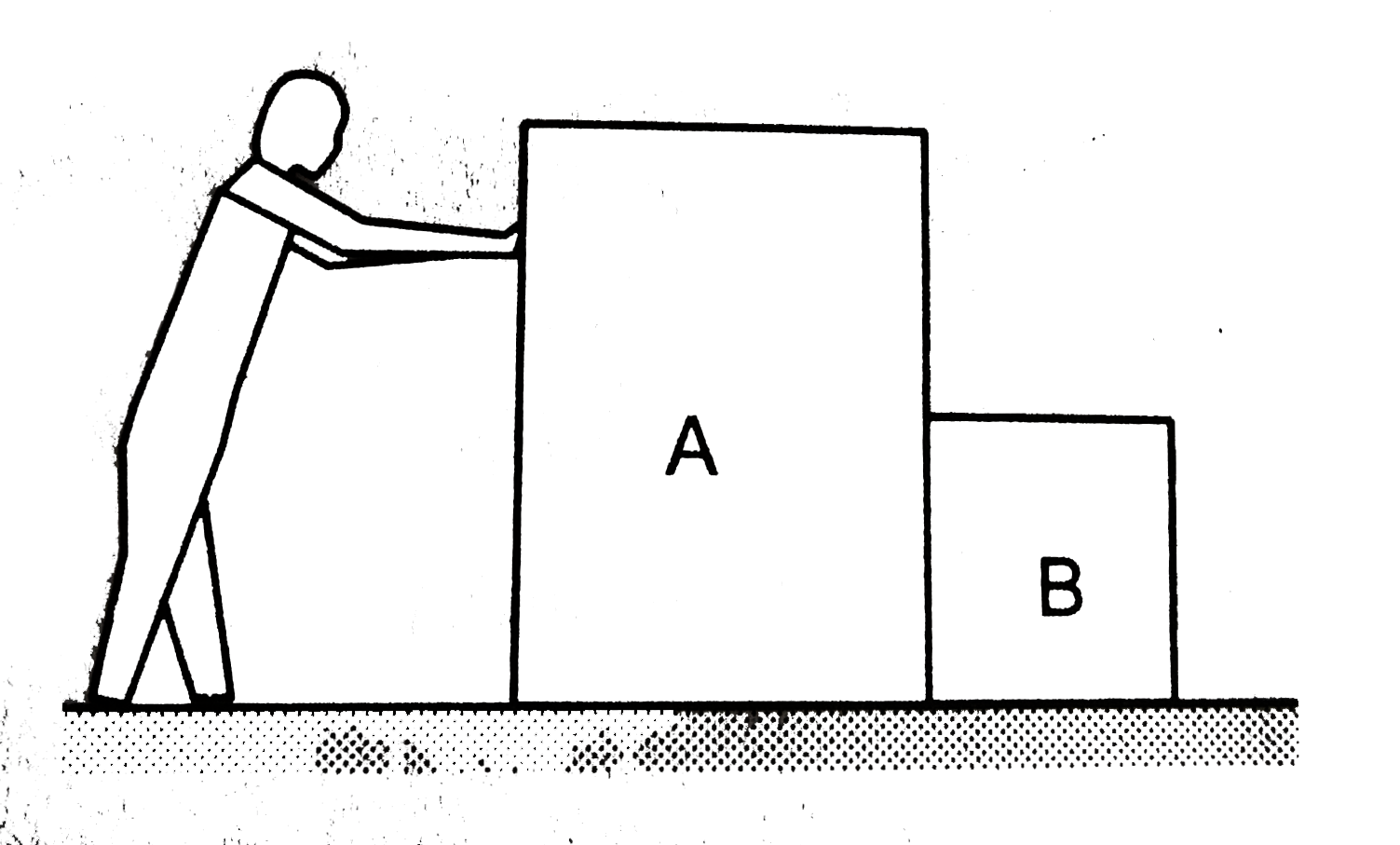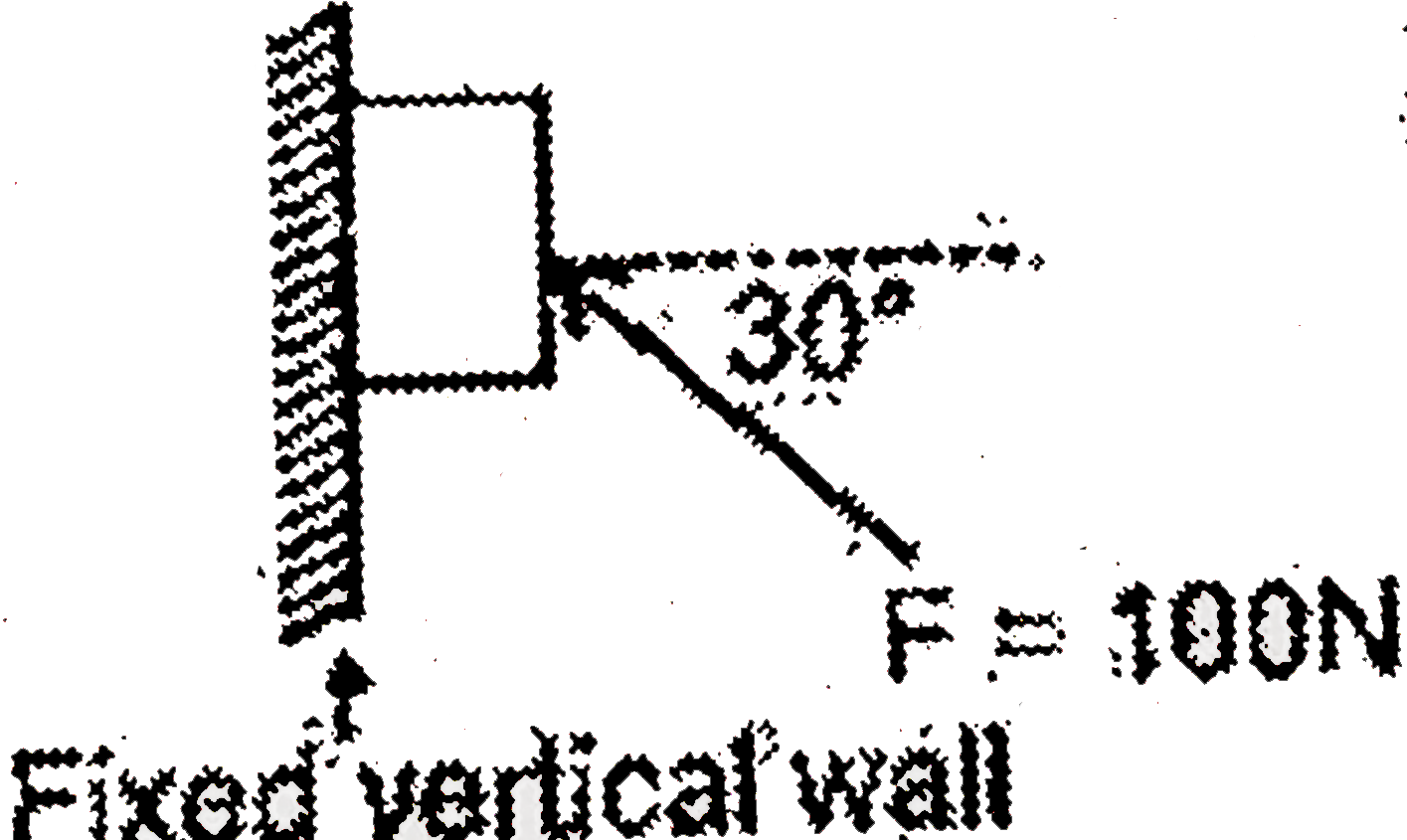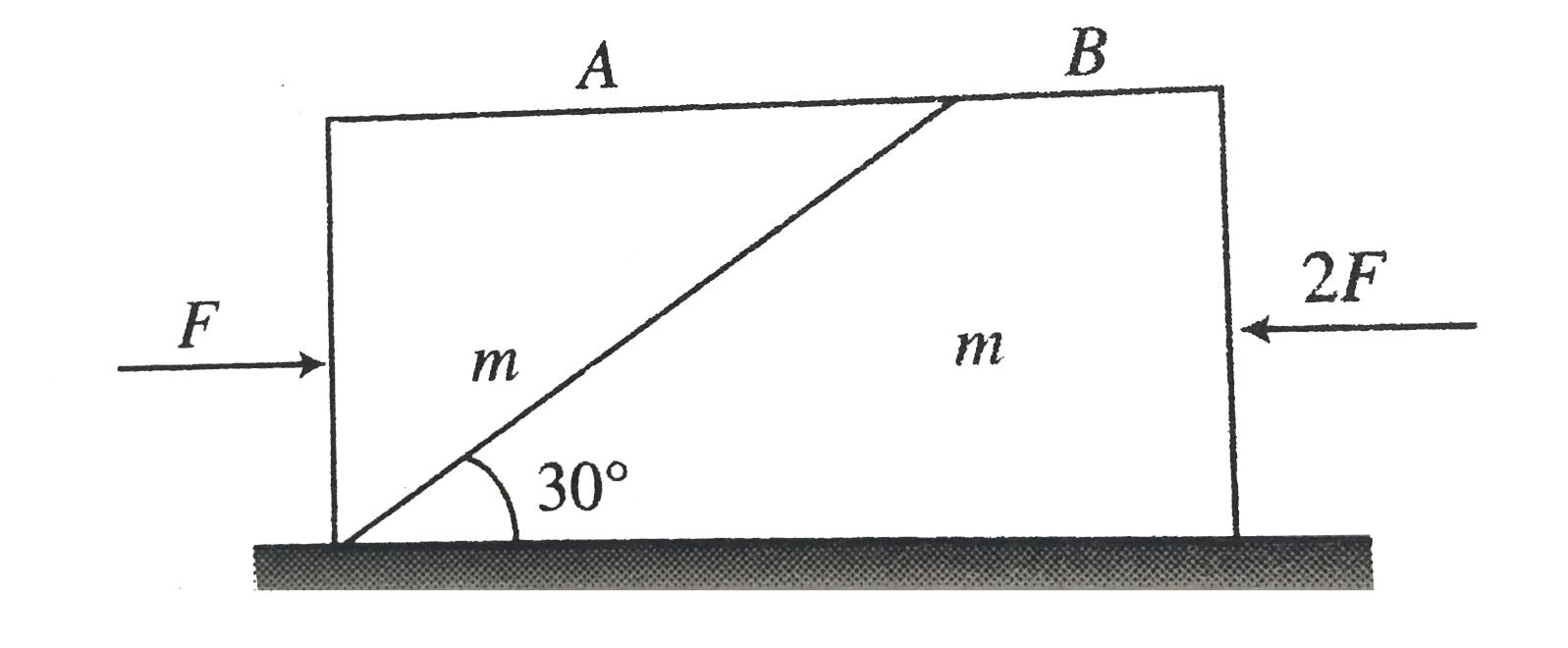
All the blocks shoen in the figure are at rest.The pulley is smooth and the strings are light. Coefficient of friction at all the contacts in 0.2 A frictional force of 10 N acts between A and B. The blocks A is about to slide on block B. The normal reaction and frictinal force exerted by the ground on the blocks B is.
The normal reaction exerted by the ground on the block B is 110 N
The normal reaction exerted by the ground on the block B is 50 N
The frictional force exerted by the ground on the block B is 20 N
The frictional force exerted by the ground on the block B is zero
The correct Answer is:A, D

The frictional force on blocks A is
⇒μN1=10⇒N1=100.2=50N
The net force on block B in vertical direction is zero
N1=50+N1+10=110N
⇒ Normal reaction exerted by ground on blocks B is 110 N.
The net force on block B in horizontal direction is zero.
f+10−10=0
⇒ frictional force exerted by ground on block B is zero
Similar Questions
In the previous problem. The friction force applied by ground on block B is
View SolutionEach of the two block shown in the figure has mass m. The pulley is smooth and the coefficient of friction for all surfaces in contact is μ. A constant horizontal force P applied in two cases shown in such a way that block A start just sliding then the value of minimum force P in case-I and case-II is :
 View Solution
View SolutionList all the forces acting on the block B in figure.
 View Solution
View SolutionA force of 100N is applied on a block of mass 3kg as shown below. The coefficient of friction between wall and the block is 1/4. The friction force acting on the block is :
 View Solution
View SolutionA block of mass 2 kg is pushed against a rough vertical wall with a force is 40 N. Coefficient of static friction being 0.5. Another horizontal force is 15 N, is applied on the block in a direction parallel to the wall. Will the block move? If yes in which direction? If no, find the frictional force exerted by the wall on the block.
View SolutionA block of mass 2 kg is pushed against a rough vertical wall with a force of 40N. Coefficient of static friction being 0.5. Another horizontal force of 15 N, is applied on the block in a direction parallel to the wall. Will the block move? If yes in which direction? If no, find the frictional force exerted by the wall on the block.
View SolutionTwo blocks A and B each of mass m are placed on a smooth horizontal surface. Two horizontal force F and 2F are applied on blocks A and B, respectively, as shown in fig. Block A does not slide on block B. Then then the normal reaction acting between the two blocks is (assume no friction between the blocks)
 View Solution
View SolutionTwo blocks A and B each of mass m are placed on a smooth horizontal surface. Two horizontal force F and 2F are applied on blocks A and B, respectively, as shown in fig. Block A does not slide on block B. Then then the normal reaction acting between the two blocks is (assume no friction between the blocks)
 View Solution
View SolutionTwo blocks A and B each of mass m are placed on a smooth horizontal surface. Two horizontal force F and 2F are applied on blocks A and B, respectively, as shown in fig. Block A does not slide on block B. Then then the normal reaction acting between the two blocks is (assume no friction between the blocks)
 View Solution
View SolutionTwo blocks A and B each of mass m are placed on a smooth horizontal surface. Two horizontal force F and 2F are applied on blocks A and B, respectively, as shown in fig. Block A does not slide on block B. Then then the normal reaction acting between the two blocks is (assume no friction between the blocks)
 View Solution
View Solution

